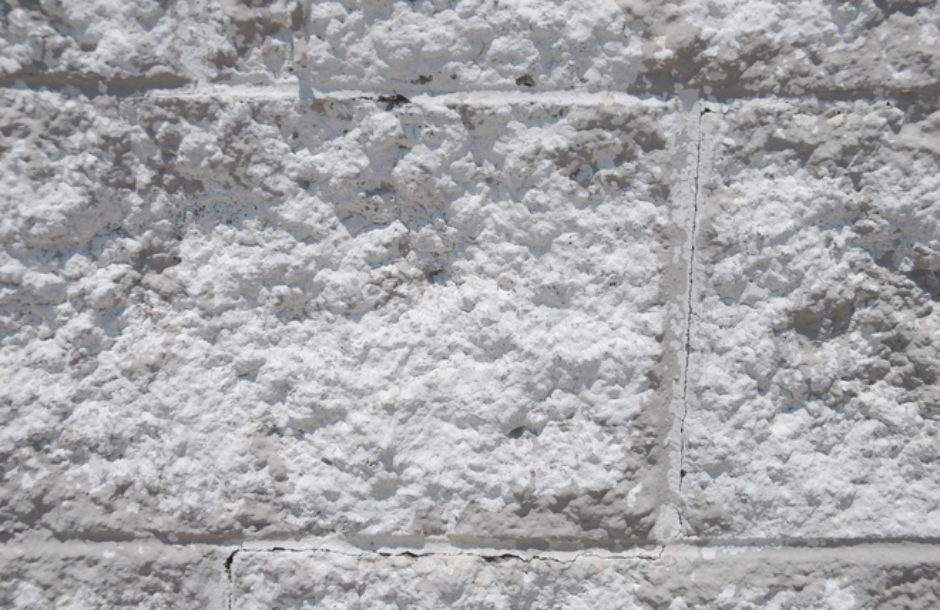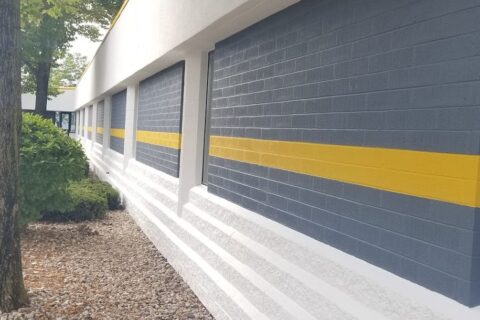Paint Failure on Concrete Block Surfaces and What to Do About It


Concrete Block is a common building material used on commercial and industrial buildings. As with any building material, a number of factors can cause paint failure. Here is what to look for and what to do about it.
Inspect Walls for Cracks
Before the cleaning and painting process even begins, a facility manager and painter should give the concrete block a thorough inspection for cracks. You also want to keep your eyes out for moisture, paint failure’s best friend. The inspection for moisture and cracks will go a long way in ensuring the building’s structural integrity. If these things are ignored, the repair costs down the line will be significantly more than if you nip it in the bud early on.
The causes of cracks can vary from moisture and foundation settlement to bad support and thermal expansion. Moisture and thermal expansion result from weather changes and can cause cracks to shift or remain static. It might be necessary to call in a structural engineer if a crack seems as though it is threatening the building’s stability. Look for settlement cracks, which are diagonal or stair-stepped. They first appear near the base of the concrete black wall. Depending on the quality of the build and the extent of cracking, a structural engineer might recommend additional structural support. Other, smaller cracks can be sealed to prevent moisture intrusion.
Mortar Joints
The spaces between concrete blocks are called mortar joints. Over time, moisture can cause mortar joints to deteriorate. Poorly mixed mortar and freeze/thaw cycles can trigger this process. Inspect the mortar joints for integrity. If they are largely stable, a painter can repair them by a process known as tuck-pointing (or, repointing). With tuck-pointing, fresh mortar is applied to mortar joints.
Holes, Scrapes and Gouges
A painting contractor should also look for all scrapes, holes, and gouges in the concrete block. They will need to be fixed prior to painting. Don’t use caulks or sealants to repair the blocks—use masonry repair material. Other things to repair: flashing failures, spalled block, damaged weep (drainage) systems, galvanized parapet cap corrosion, cracked sealants, and gutter leaks.
Painting Concrete Block
After inspection, cleaning, and repair, then it’s time to paint the concrete block. The concrete block comes in two forms: smooth or texture. The smooth block requires less paint, whereas the textured block—also called “split-face”—is rough and gravel-like. With split-face, the paint must be worked carefully applied to fill the porous surface. It will typically require twice the primer and paint than a smooth block.
Lakeside Painting will typically use 100% acrylic coating. They outlast oil paints by a fairly wide margin, which is important both to our clients and our to our business. We typically use a sprayer for application, though we back-roll and/or brush all concrete block coatings. The importance of the back-roll and/or brushing cannot be understated: a pinhole-free (non-porous) surface is absolutely vital to protect against moisture intrusion, the leading cause of most concrete block paint failures.
Lakeside would be happy to help with concrete block mishaps. Check out our Sponge and Abrasive Blasting page to find out more.

